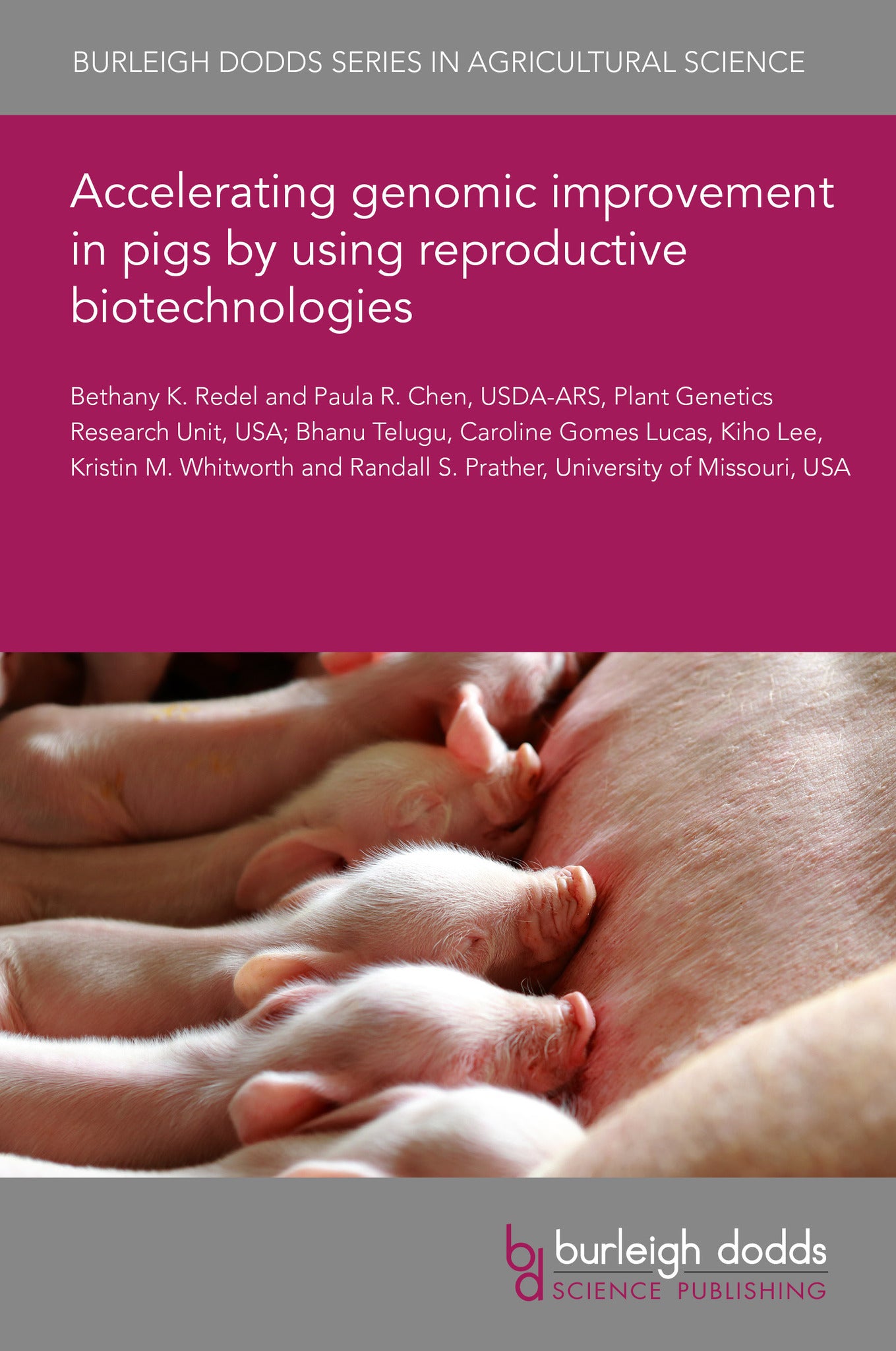We're sorry. An error has occurred
Please cancel or retry.
Accelerating genomic improvement in pigs by using reproductive biotechnologies

Some error occured while loading the Quick View. Please close the Quick View and try reloading the page.
Couldn't load pickup availability
- Format:
-
07 May 2025

To meet the food demand of the growing population, there's a need to increase the amount of protein produced from animals. Pork is the second largest contributor of global meat consumption. Identifying ways to increase the efficiency of pig production is pivotal to meeting the US and global demand for nutrients and maintaining resilient supply chains. Genome editing technology can accelerate genetic improvements by introgressing novel traits, decreasing the number of generations required to incorporate the desired allele(s), providing solutions to animal welfare concerns, maximizing nutrient yield, and reducing the use of resources. The technology provides scientists a tool to incorporate multiple genetic traits into a line of livestock species or introduce novel traits. This review highlights the methods for generating genetically engineered pigs beginning with the production of embryos and ending with techniques for performing the genetic modifications. Available swine models designed to benefit production agriculture are highlighted.

TECHNOLOGY & ENGINEERING / Agriculture / Animal Husbandry, Animal breeding, TECHNOLOGY & ENGINEERING / Agriculture / Sustainable Agriculture, Sustainable agriculture

- 1 Introduction
- 2 In vitro production of pig embryos
- 3 Genetic engineering: embryo-based genetic engineering
- 4 Genetic engineering: cell-mediated approaches
- 5 Gene editing to improve swine production: disease resistance
- 6 Gene editing to improve swine production: welfare concerns
- 7 Conclusion and future trends
- 8 Where to look for further information
- 9 References



